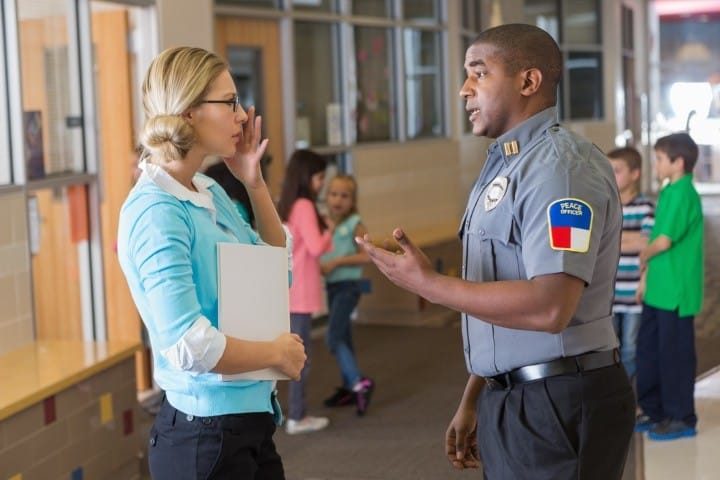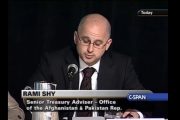
Two weeks ago, The New American reported on a New York Times essay titled “How Britain’s Crackdown on Gangs Disproportionately Targets Young Black Men” that didn’t even attempt to explain “how.” Instead, the paper provided a case study in media propaganda, presenting only human-interest stories designed to manipulate emotions. Now USA Today has followed suit. Asking in a headline, “Why do kids as young as 5 or 6 still get arrested at schools?” you guessed it — the paper never tried explaining why. (Well, at least the media still have the “who, what, where, and when” of journalism.)
Predictably, USA Today also joined the Times in playing the race card, claiming that punishments are “often applied unfairly to Black children.” It was not reported whether this disparate treatment could have anything at all to do with disparate behavior.
Now, many surely agree (I’m one of them) that it’s ridiculous that our society has reached a point where cops are sometimes summoned to deal with young grade-schoolers. But the reason “why” this happens, left unmentioned in USA Today’s 7,000-word(!) essay, should be stated right off the bat: It’s the same reason why parents now sometimes call the police on their young kids.
Schools, along with parents (to a lesser degree), are now severely limited in their ability to enforce discipline. If a child gets physical — common today — you must respond with physicality, even if this simply means restraining the violent, out-of-control student. Yet while corporal punishment was once accepted in schools, now teachers may be reluctant to even touch a child, lest they spark a lawsuit and possibly lose their jobs. The obvious result is that teachers wash their hands of the matter and outsource the “discipline” to police.
(Apropos to this, USA Today mentions the case of a teacher who “is not allowed to break up fights” or “restrain children.” Because of this, after a child attacked her one day, he was able to run outside and into traffic. Great system, huh?)
Anyone complaining about this should consider something: Unless we’ll accept anarchy, necessary physical action is going to have to be exercised “in house” by school staff — or by the cops. Take your pick.
But USA Today doesn’t pick; it just propagandizes. Of the approximately 130 young children arrested in school yearly, the paper provides several examples. These don’t include, however, the Florida 5-year-old who reportedly battered a teacher so badly she required hospital treatment, the New Jersey sixth grader who struck an educator and caused nerve damage, the Georgia third graders who plotted to attack a teacher and were in possession of “a broken steak knife, handcuffs, duct tape and other items for the job,” or any of the close to 200,000 other educators physically assaulted by students each year. It cherry-picked different stories.
The paper couldn’t cite cases that didn’t tell the tale. Oh, the first is introduced like this: “Her dark eyes shone. Her black curls bounced. This was Kaia Rolle. A diva who hugged strangers.”
But not one day in 2019 when, after being forbidden to wear sunglasses in class, then-6-year-old “Kaia started screaming, kicking and hitting staffers,” relates USA Today, and then “tried to run away” when a teacher’s aide led her to an office. Staffers had to block the doors.
Next there’s Evelyn Towry, now 21, arrested in 2009 after she “kicked, yelled, spit and hit” and “pinched her teacher’s breast, hard,” writes the paper, in response to being put in a chair for misbehaving.
Then there was 7-year-old Malachi Pryor. After a shoving match with another boy in 2019, he was led outside his classroom but “resisted by sitting down,” according to the article. He “was restrained by the security officer, dragged down the hallway in front of other students and eventually handcuffed,” though he wasn’t charged.
You can read these kids’ background “stories” at USA Today if you’re interested. And, in fairness, it’s entirely possible their particular cases weren’t handled properly. But what’s most striking here? Is it that “school resource officers” are arresting young children who attack teachers?
Or is it that young children are attacking teachers in the first place?
I attended a government elementary school in the 1970s in the Bronx — and I don’t remember ever seeing a child resist or get physical with a teacher. While we kids weren’t angels, we did receive greater parental discipline and were conditioned to know boundaries. Attacking an authority figure didn’t even enter our minds.
Going back even further, the late Professor Walter Williams mentioned that when he attended high school in the ’50s, the worst behavior problems were chewing gum in class and running in the hallways. As to what changed, that’s a long story. In a nutshell, however, as psychologist John Rosemond once put it, modern society has embraced “a dysfunctional parenting paradigm” (i.e., liberalism-enabled permissiveness).
But USA Today doesn’t delve into such things in its 7,000 words. Instead, the paper talks about how Kaia is now traumatized and that her “trauma has become stuck in the amygdala, creating emotional explosions.”
Perhaps. But unless it’s part of a new phase of human development, I’m fairly sure we had amygdalas in the 1970s. Why, Walter Williams might’ve even had an amygdala in the ’50s. But we still didn’t act like wild animals.
USA Today also writes much about racism, campaigns against in-school arrests, and the latter’s effect on children. But there’s a consequence it doesn’t mention: Is it at all possible that kids who resist/attack teachers when they’re 8, and aren’t corrected, will later attack police when they’re 18? And if they then get shot, whose fault will it be?
The paper writes that it “seems inconceivable: Educators calling police on elementary school kids for typical child behavior.” What should seem inconceivable is that anybody would consider attacking teachers “typical child behavior.” But coming from a media that portrayed BLM/Antifa’s 600-plus violent 2020 riots as typical protesting, perhaps it’s not surprising.




